10 Dec Food | Water
AGIL® Smart Water Solutions
Globally, approximately one-third of the water intended for consumption never reaches its intended destination or remains unbilled. This is primarily due to issues like pipe leakages, unauthorised connections and inadequate metering solutions. With increasing water scarcity, a smarter, more reliable water supply and management infrastructure contributes directly to the liveability of cities.1. AGIL® Advanced Water Metering Infrastructure and Smart Meters
ST Engineering’s AGIL® Advanced Water Metering Infrastructure connects and manages millions of water meters around the world. Its Automated Metering Infrastructure (AMI) solutions leverage radio-based technology to automate meter readings and remotely collect water usage data in real-time. By fully automating meter reading, billing and data collection processes, AMI empowers water utility authorities and cities to prevent non-revenue losses and protect water resources while delivering responsive services to customers to better manage water supply and consumption.
2. AGIL® Automated Water Leak Detection Solution
Water loss in the water supply system and high cost of maintaining pipes can be a critical issue to cities, especially water-scarce cities. ST Engineering's AGIL® Automated Water Leak Detection solution integrates the use of advanced sensors with an IoT platform to support continuous and automatic monitoring of water supply systems that enable early detection of water leakages, and defective pipes and faults.
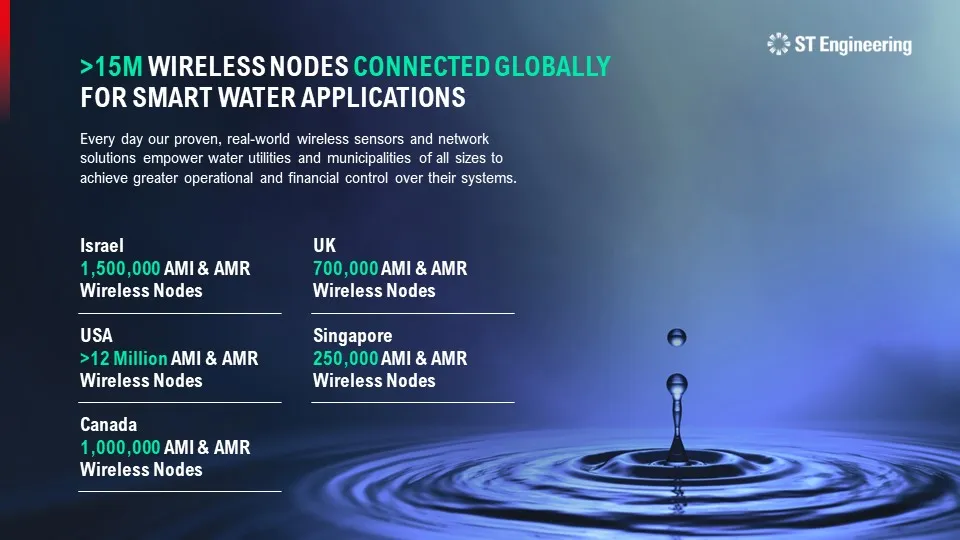
15 million wireless nodes connected globally for smart water applications.
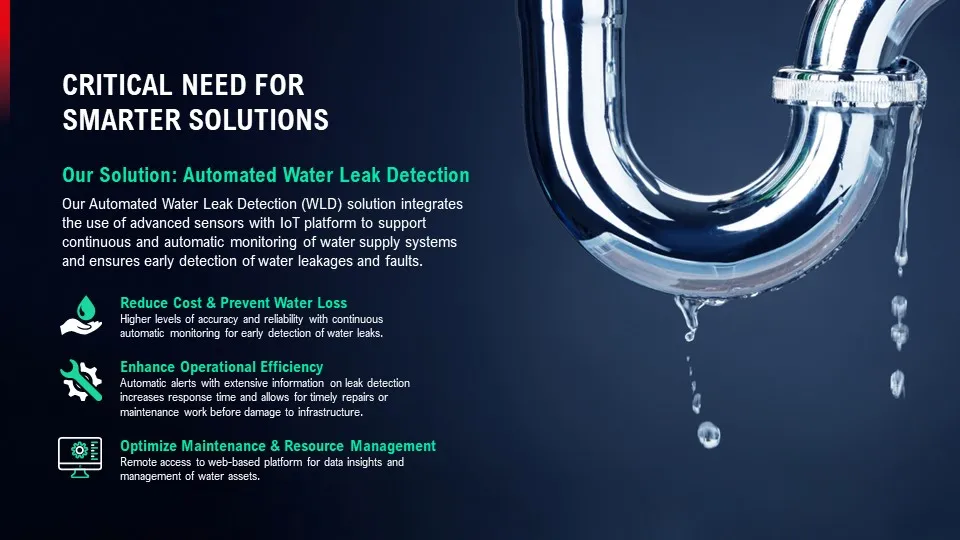
Automated water leak detection.
Autonomous Smart Drone Solution for Monitoring of Reservoirs
With a small operational carbon footprint, ST Engineering's DroNet is an electrically powered network of drones that are operated Beyond Visual Line of Sight (BVLOS) from a command hub. BVLOS means the operation of drones at distances outside the normal visible range of the pilot. The command hub uses automated procedures to enable a small team to deploy multiple drones concurrently. The drones can be launched and recovered autonomously from drone stations at designated sites without the need for an on-site support crew.The DroNet's Video Analytics module employs Deep Neural Network models that are trained to detect the presence of vessels and aquatic plants in the reservoirs. Drones are flown to capture aerial imageries of the reservoirs to count the vessels in the reservoirs and to classify whether the aquatic plants are near or under water surface. The monitoring would otherwise require the efforts of many boatmen to patrol the reservoirs using diesel-powered boats.
Hyperspectral sensors are integrated onto the drones, tuned and regressed to measure the level of chlorophyll-a and turbidity remotely. In addition to offering wider coverage within a shorter time frame, the measurement capability also provides near real-time water quality data, eliminating the need for laboratory tests on water samples.
A web-based Viewing Platform and mobile-based Alert Notification System were developed to share real-time data and notifications with users, improving their operational response time.
Find out more here.
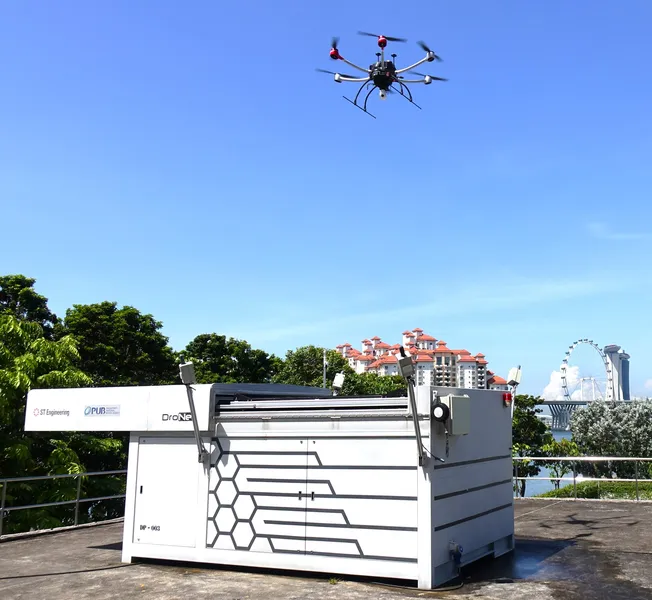
Drones are launched and recovered autonomously from stations at designated sites.
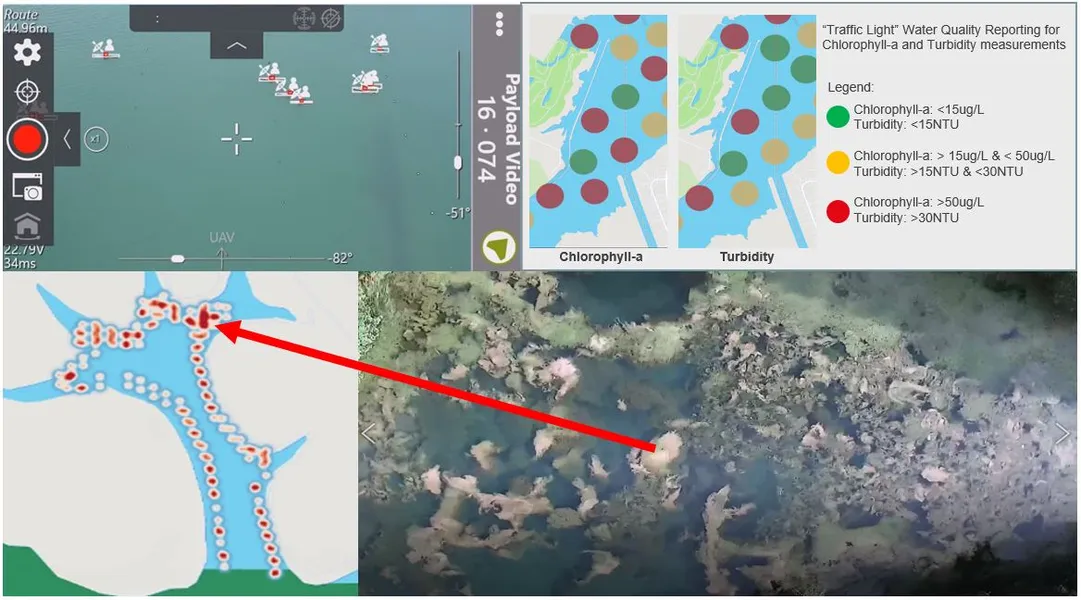
Remotely detect and measure level of chlorophyll-a and turbidity.
Intelligent Water Management System
Rising global temperatures lead to a higher rate of water loss, which contributes to severe droughts and floods and affects the freshwater water supply in ecosystems worldwide. To meet the water demands of increasing population and cites with scarce water resources, it is crucial for water agencies to leverage technology and integrated water solutions. Water agencies have to optimise water operations and ensure seamless management of multiple water resources while safeguarding water resources against threats such as pollution, sabotage and natural disasters. These diverse water sources can range from local catchments, imported water to desalination and reclaimed water.ST Engineering's Intelligent Water Management System (IWMS) provides greater visibility of water operations through real-time monitoring and control of water systems, applications and sensors. It uses a systematic approach to monitor water drainage networks and equipment for flood prevention. By leveraging AI, the IWMS improves forecast of water demand and optimises water production and distribution. Its structured workflow and incident management delivers quick incident response that minimises disruptions and wastage.
The IWMS enables water agencies to reduce daily water system planning time by 85%, minimise unexpected fluctuations and disturbances to water demand and deliver more sustainable management of water resources to ensure water resources are efficiently managed and distributed where and when it is needed most.
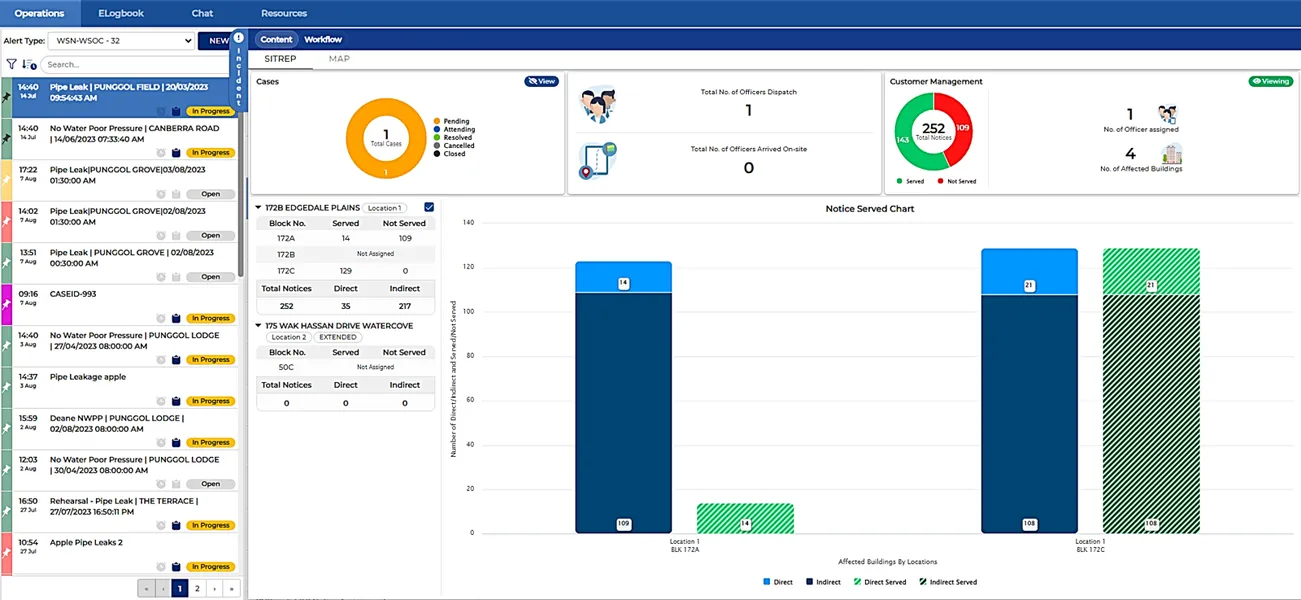
One-glance dashboard and incident handling in the IWMS.
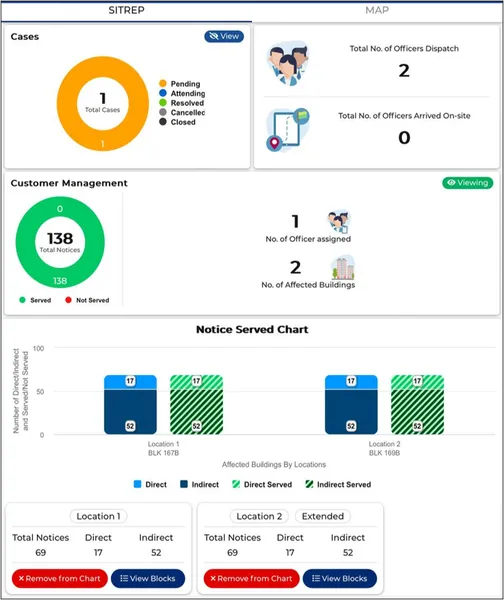
Mobile app for on-the-go operations management.
Jurong Island Desalination Plant: Singapore's Fifth Desalination Plant
ST Engineering enhanced the resilience of Singapore's water supply at the Jurong Island Desalination Plant (JIDP) by tapping into the latest proven technology incorporating innovative and sustainable environmental engineering solutions. The 3.7-hectare JIDP is a vital water source that contributes to strengthening Singapore's water security. Located on Jurong Island, it produces up to 137,000 cubic metres of potable water for Singapore's daily consumption.Constructed under the Design, Build, Own and Operate model, the JIDP is operated by TP-STM Water Resources Pte Ltd, a joint venture formed by Tuas Power and ST Engineering, for a 25-year period. It receives seawater from Tuas Power's Tembusu Multi-Utilities Complex for processing into potable water.
The challenge of building a full-fledged desalination plant on existing infrastructure called for innovative engineering solutions. These range from developing modular systems for various desalination stages to pre-fabricating equipment such as reverse osmosis units for water treatment. The plant is highly automated – a three-person team can run the entire plant's operations from the control room. It also incorporates the latest water treatment equipment and membrane technologies, including dissolved air flotation, ultra-filtration and reverse osmosis.
Find out more here.
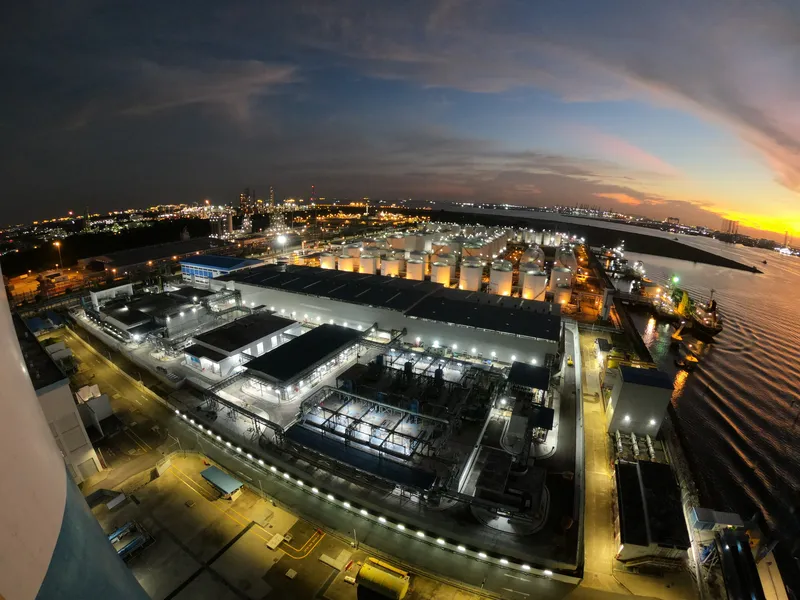
As a weather-resilient water source supported by advanced technology and innovations, the JIDP plays an important role in Singapore's water supply sustainability.
